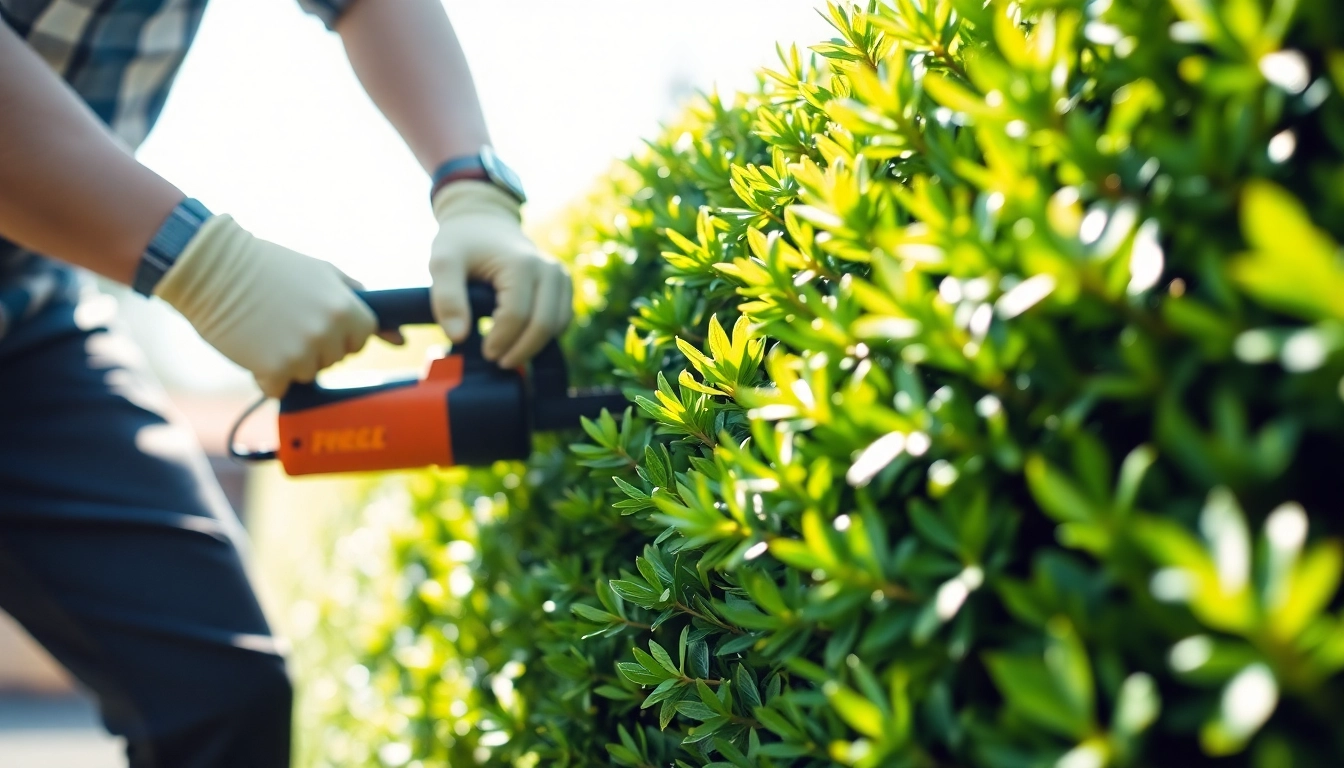Understanding the Basics of Shrub Trimming
Shrub trimming is an essential aspect of landscape maintenance that contributes significantly to the health and appearance of your garden. It involves the practice of pruning or shaping your shrubs to enhance their growth, maintain their desired form, and remove dead or diseased parts. Shrub trimming not only improves aesthetics but also promotes stronger and healthier plants. In this article, we’ll delve deep into the techniques and best practices of shrub trimming, ensuring that your garden remains vibrant and well-kept.
Why Shrub Trimming is Essential for Garden Health
Shrubs play a crucial role in the overall ecosystem of your garden. They provide habitat for birds and beneficial insects while adding texture and color to the landscape. However, without proper trimming, shrubs can become overgrown, suffer from diseases, and invite pests. Regular trimming enhances air circulation, allowing sunlight to penetrate deeper into the plant. This not only stimulates healthy growth but also helps in controlling the size of the shrub, keeping it within your desired dimensions.
Tools You’ll Need for Effective Shrub Trimming
Using the right tools is vital for effective shrub trimming. Here are some essential tools:
- Hand Pruners: Ideal for trimming small branches and shaping shrubs.
- Loppers: Useful for cutting thicker branches that hand pruners can’t manage.
- Hedge Trimmers: Electric or manual trimmers make the job faster for larger shrubs.
- Safety Gear: Gloves, goggles, and a mask to protect against debris and allergens.
Common Shrub Types and Their Trimming Needs
Different shrubs have unique trimming needs based on their growth patterns and blooming cycles. Here are some common shrub types:
- Deciduous Shrubs: These lose their leaves in winter and typically benefit from pruning in late winter or early spring before new growth appears.
- Evergreen Shrubs: They can be trimmed in late winter or early spring, but avoid heavy pruning, as this can kill their growth points.
- Flowering Shrubs: Timing is critical; prune those that bloom in spring after they flower, and trim summer bloomers in late winter or early spring.
When and How to Trim Your Shrubs
Optimal Seasons for Shrub Trimming
Timing is everything in shrub trimming. Generally, the best times to trim are:
- Late Winter/Early Spring: Before the growing season starts, which is optimal for most shrubs.
- After Flowering: For those shrubs that bloom in spring, trim them right after they have finished blooming.
Step-by-Step Guide to Trimming Different Shrub Varieties
Follow these simplified steps to achieve effective trimming:
- Assess: Look for dead, diseased, or damaged branches.
- Plan: Visualize the shape you want for the shrub.
- Cut: Start with the oldest or weakest branches, cutting them back to a healthy bud or shoot.
- Shape: Make cuts to encourage the desired shape while ensuring the base remains wider than the top to allow for healthy growth.
Avoiding Common Mistakes in Shrub Trimming
While trimming offers numerous benefits, common mistakes can undo your efforts:
- Over-pruning: Removing too much foliage can stress the plant and hinder growth.
- Ignoring Plant Health: Failing to inspect the shrub for pests or disease prior to trimming can lead to poor outcomes.
- Poor Timing: Trimming at the wrong time can affect blooming and overall health.
Advanced Techniques for Professional-Grade Shrub Trimming
Creative Shrub Shapes and Designs
Taking shrub trimming to the next level means considering creativity in your landscaping. Popular designs include:
- Topiary: Sculpting shrubs into designs or geometric shapes.
- Espalier: Training shrubs to grow flat against a wall or structure.
Using these techniques can greatly enhance your garden’s aesthetic value and create unique visual interests. They often require skilled techniques and an understanding of plant growth habits.
Incorporating the 1-3 Rule in Your Shrub Care
The one-third rule is a guideline that suggests removing no more than one-third of a shrub’s total mass during a single trim. This is essential for maintaining plant health and encouraging vigorous new growth. It is especially relevant for rejuvenating older plants, where careful planning of cuts is required to encourage balanced growth.
Tools and Techniques for Precision Trimming
For a professional look, precision trimming is key. Consider these tools and techniques:
- Precision Hand Pruners: Ideal for delicate trimming.
- Laser Level: Use for ensuring even cuts while shaping.
- Trimming Templates: Having a physical model or outline to shape the shrub can help maintain uniformity.
Costs and Considerations in Hiring Professional Trimmers
Understanding Pricing for Shrub Trimming Services
The costs associated with professional shrub trimming can vary significantly based on several factors:
- Location: Prices may vary regionally.
- Bush Size: Larger bushes typically cost more to trim.
- Condition of Shrubs: Overgrown or neglected shrubs may require more intensive work, thereby increasing costs.
On average, homeowners can expect to pay between $110 and $440, depending on these factors.
Evaluating Cost vs. Benefit in Hiring Professionals
Before deciding to hire a professional shrub trimming service, consider the benefits against the costs:
- Expertise: Professionals have knowledge of trimming techniques that may lead to better results.
- Time-saving: They can complete the job more quickly than an inexperienced homeowner.
- Equipment: Professionals often use specialized equipment that may be costly for homeowners to buy or rent.
While DIY trimming can be rewarding, professional services often provide peace of mind and superior results.
Where to Find Quality Shrub Trimming Services Nearby
To find reliable shrub trimming services in your area, consider:
- Online Reviews: Websites like Yelp or Google Reviews can provide insights into local services.
- Word of Mouth: Neighbors and friends can often recommend excellent landscaping services they’ve used.
- Local Directories: Check local business listings and make calls to evaluate their service offerings and cost structures.
Maintaining Your Shrubs After Trimming
Post-Trimming Care: What to Do Next
After trimming, it’s important to care for the shrubs properly to ensure they recover and thrive:
- Watering: Newly trimmed shrubs may require additional water to help them recover.
- Mulching: Apply mulch to retain moisture in the soil and suppress weeds.
- Fertilization: Use a balanced fertilizer to promote healthy new growth following trimming.
Sustaining Health: Fertilization and Watering Techniques
For ongoing maintenance:
- Fertilizing Schedule: Late winter and early spring are ideal for fertilizing most shrubs.
- Watering Frequency: Bases your irrigation on local weather; during dry spells, increase watering to promote healthy growth.
Long-term Shrub Maintenance Strategies for Homeowners
To maintain healthy and aesthetically pleasing shrubs year-round:
- Regular Inspections: Assess shrubs regularly for signs of disease and pests.
- Consistent Trimming: Schedule trimming that matches the growth pattern of your specific shrubs.
- Soil Health: Ensure soil retains nutrients and has adequate drainage to support healthy shrub growth.








